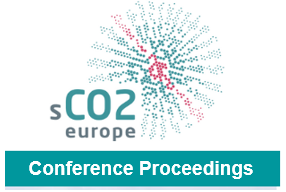Estimated cost and performance of a novel sCO2 natural convection cycle for low-grade waste heat recovery
The current work focuses on development of a natural-convection-driven system for low-cost power generation from low-grade heat sources using supercritical carbon dioxide (sCO2) as the working fluid. Cycle modelling sensitivity studies were conducted to predict available power generation and estimated installation cost for four applications of various thermal and physical scales; the considered applications ranged from a 2 MW-th data center to an 80 MW-th geothermal application. Sensitivity studies included variations in the sCO2 temperatures and pressures, the flow loop pipe sizing, and the flow loop elevation change to quantify the impact of each design variable on the recoverable power, the thermal efficiency, and the estimated capital cost per power. Results of this study show that increasing the elevation change across the cycle and decreasing low-side CO2 temperature (to near or below the critical temperature of 31.1°C) generated the most significant improvements in cycle performance and specific cost. It was also found that the cost per power is lowest for the largest thermal scales, namely geothermal-type applications. However, even though the small- and medium-scale applications have higher specific costs, the actual installation cost is still considered relatively low. Therefore, it is expected that these waste heat recovery cycles could still present competitive solutions for small electrical power requirements where very low-grade waste heat is available.
Vorschau

Zitieren
Rechte
Nutzung und Vervielfältigung:
Dieses Werk kann unter einer Creative Commons Namensnennung 4.0 Lizenz (CC BY 4.0)
Creative Commons Namensnennung 4.0 Lizenz (CC BY 4.0)
genutzt werden.
